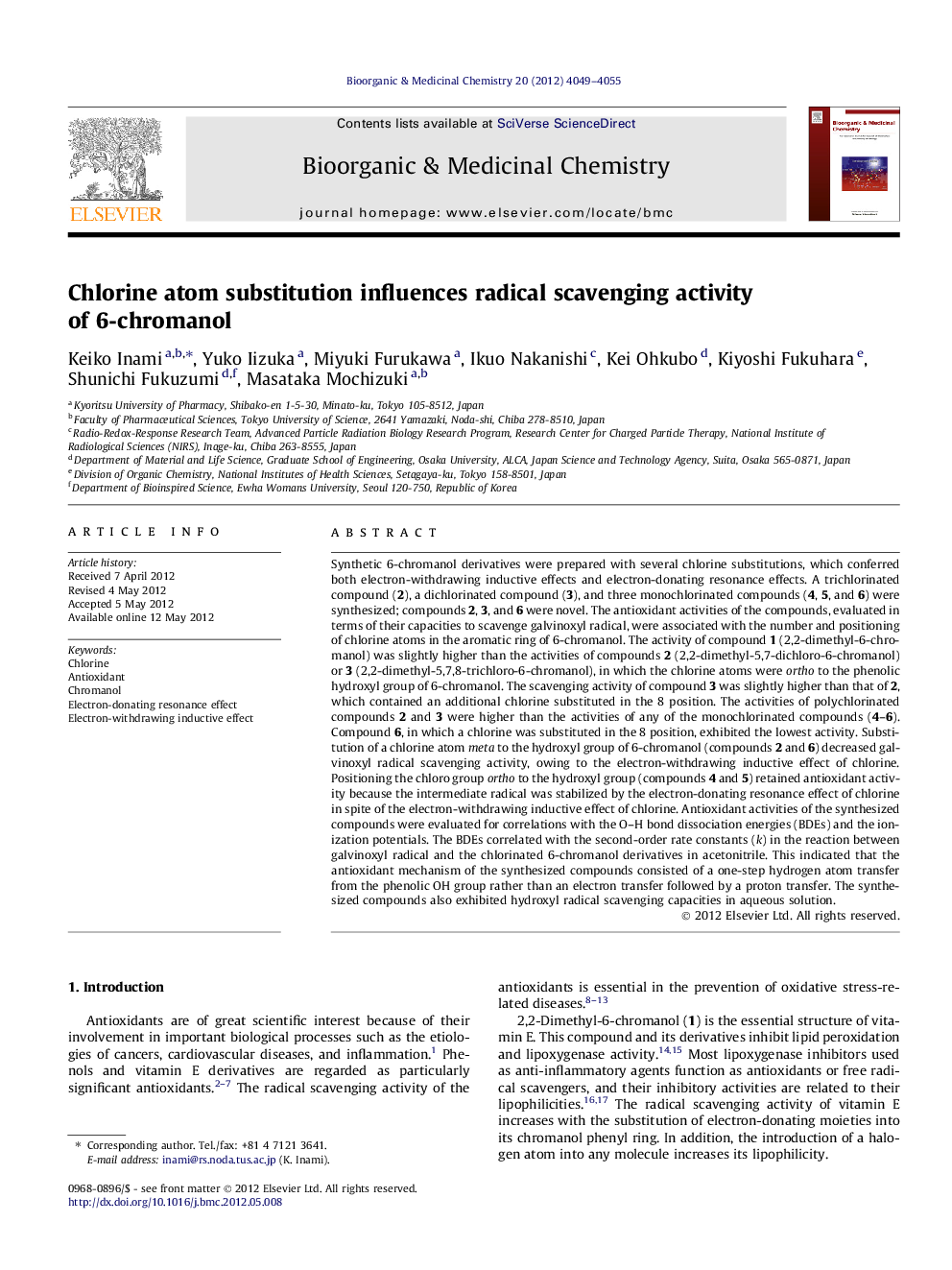| کد مقاله | کد نشریه | سال انتشار | مقاله انگلیسی | نسخه تمام متن |
|---|---|---|---|---|
| 1358596 | 981350 | 2012 | 7 صفحه PDF | دانلود رایگان |

Synthetic 6-chromanol derivatives were prepared with several chlorine substitutions, which conferred both electron-withdrawing inductive effects and electron-donating resonance effects. A trichlorinated compound (2), a dichlorinated compound (3), and three monochlorinated compounds (4, 5, and 6) were synthesized; compounds 2, 3, and 6 were novel. The antioxidant activities of the compounds, evaluated in terms of their capacities to scavenge galvinoxyl radical, were associated with the number and positioning of chlorine atoms in the aromatic ring of 6-chromanol. The activity of compound 1 (2,2-dimethyl-6-chromanol) was slightly higher than the activities of compounds 2 (2,2-dimethyl-5,7-dichloro-6-chromanol) or 3 (2,2-dimethyl-5,7,8-trichloro-6-chromanol), in which the chlorine atoms were ortho to the phenolic hydroxyl group of 6-chromanol. The scavenging activity of compound 3 was slightly higher than that of 2, which contained an additional chlorine substituted in the 8 position. The activities of polychlorinated compounds 2 and 3 were higher than the activities of any of the monochlorinated compounds (4–6). Compound 6, in which a chlorine was substituted in the 8 position, exhibited the lowest activity. Substitution of a chlorine atom meta to the hydroxyl group of 6-chromanol (compounds 2 and 6) decreased galvinoxyl radical scavenging activity, owing to the electron-withdrawing inductive effect of chlorine. Positioning the chloro group ortho to the hydroxyl group (compounds 4 and 5) retained antioxidant activity because the intermediate radical was stabilized by the electron-donating resonance effect of chlorine in spite of the electron-withdrawing inductive effect of chlorine. Antioxidant activities of the synthesized compounds were evaluated for correlations with the O–H bond dissociation energies (BDEs) and the ionization potentials. The BDEs correlated with the second-order rate constants (k) in the reaction between galvinoxyl radical and the chlorinated 6-chromanol derivatives in acetonitrile. This indicated that the antioxidant mechanism of the synthesized compounds consisted of a one-step hydrogen atom transfer from the phenolic OH group rather than an electron transfer followed by a proton transfer. The synthesized compounds also exhibited hydroxyl radical scavenging capacities in aqueous solution.
Figure optionsDownload as PowerPoint slide
Journal: Bioorganic & Medicinal Chemistry - Volume 20, Issue 13, 1 July 2012, Pages 4049–4055